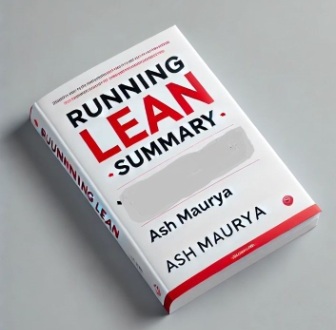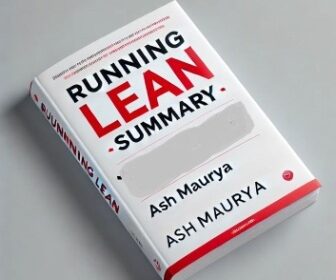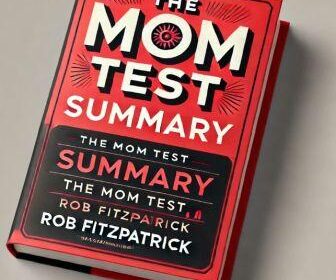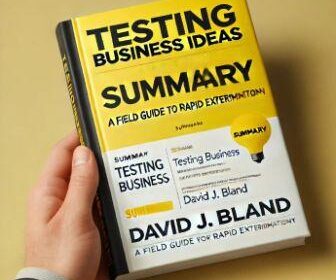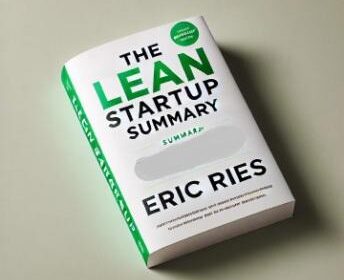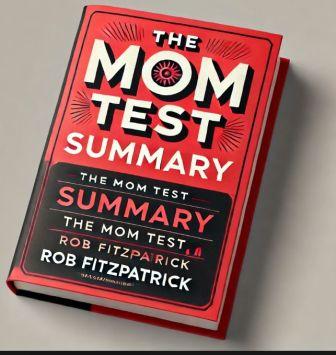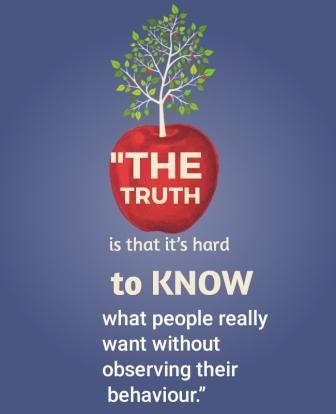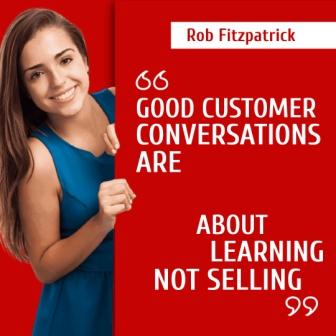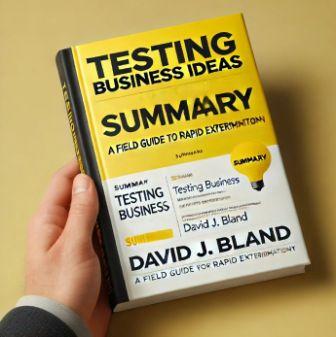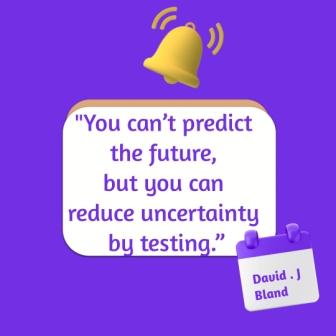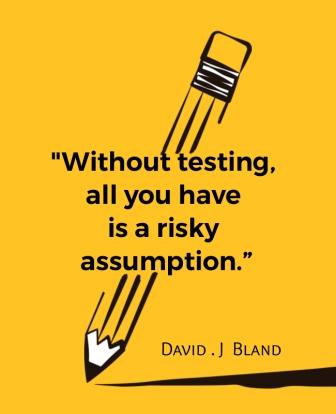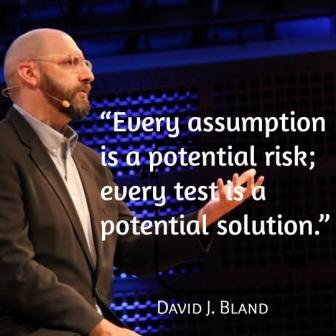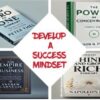Running Lean Book Summary
”If you're not embarrassed by the first version of your product, you've launched too late.” .
Ash Maurya Tweet
Running Lean Book Summary
Are you still wondering when you would have the time to read “Running Lean”?
Who has time to read a whole book these days, right?
I can relate.
That’s why we created this Running Lean book summary—so you can get the best insights, fast. This book is so juicy and we couldn’t extract it all in a summary.
Want more juicy details? Read the full book or listen to the audiobook. Let’s dive in!
Running Lean
Read a Full Book in Minutes and grab the main ideas with Evunn book summaries
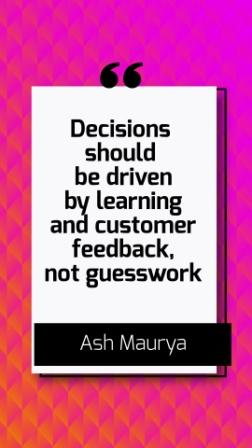
Introduction
Have a brilliant business idea? Great! But here’s the thing—ideas alone aren’t enough. The real challenge is turning that idea into a successful, profitable business. That’s exactly what “Running Lean” helps you do.
This book isn’t about building for the sake of building—it’s about testing, learning, and making sure you’re creating something people actually want.
If you’re tired of wasting time, money, and energy on guesswork, this summary will give you the tools to build smarter and faster. Let’s dive in and learn how to turn your idea into a real success story!
Click on the tabs below to read Running Lean Book summary
“Running Lean” provides a step-by-step guide for entrepreneurs to systematically test, validate, and iterate on their business ideas to reduce risk and build products that customers truly want.
“Running Lean” is ideal for:
Entrepreneurs and Startup Founders: Those looking to turn their ideas into successful businesses while minimizing risk.
Product Managers: People who want to better understand customer needs and build products that solve real problems.
Aspiring Entrepreneurs: Individuals with a business idea who want a systematic way to validate it before fully committing.
Innovators in Larger Organizations: Corporate intrapreneurs
The book helps entrepreneurs avoid the common mistake of building products nobody wants by teaching them how to:
Validate their ideas before investing significant time and money.
Minimize risk by identifying and testing the riskiest assumptions early.
Learn from customers through interviews, experiments, and feedback.
Adapt quickly based on real data, allowing them to pivot when necessary.
Introduction: Why Startups Fail
Ash Maurya begins by explaining that most startups fail because they build products that no one actually wants.
Entrepreneurs often fall in love with their ideas and start building without testing if customers really need the product. The book teaches how to systematically test your business idea to avoid this mistake and minimize risk.
Chapter 1: Running Lean – Process Overview
Maurya introduces his three-step process for creating a successful business:
Document Your Plan:
Write down all your assumptions about your business model using a tool called the Lean Canvas (a one-page business plan that focuses on the most important elements like problem, solution, and customer segments).
Identify the Riskiest Assumptions:
Figure out which parts of your plan are the riskiest (i.e., which parts could cause your business to fail if you’re wrong about them).
Systematically Test Your Plan:
Start testing your assumptions with real customers (to know if they are true) by conducting small, quick experiments (like interviews or prototypes) to gather feedback.
Chapter 2: Document Your Plan A
In this chapter, you learn how to fill out the Lean Canvas. The Lean Canvas is split into different sections that cover the most critical elements of your business as follows:
Problem: What problem are you solving for your customers?
Customer Segments: Who has this problem? Who are your customers?
Unique Value Proposition: Why should people choose your product over others?
Solution: What is your product or service?
Revenue Streams: How will you make money?
For example, if you are building an app that helps people find parking, you’d write down that the problem is “people have trouble finding parking spots in busy cities.”
Chapter 3: Identify the Riskiest Parts of Your Plan
Now that your plan is documented, you need to identify which parts are the riskiest.
According to Maurya, the riskiest assumptions are usually about whether your customers really have the problem you think they have, and if they are willing to pay for a solution.
For example, you might think that drivers are willing to pay for a parking app, but what if they aren’t? If you build the app and find out later that no one will pay, you’ve wasted time and money.
So, the idea is to test these assumptions first before you build anything big.
Chapter 4: Testing the Problem
This chapter is all about making sure that the problem you are trying to solve is real. Maurya recommends talking to customers early on to understand their pain points.
For example, you might interview 10 people who drive in busy cities and ask them how they currently find parking, what frustrates them about it, and if they would be interested in a better solution.
This helps you learn if the problem is worth solving.
Chapter 5: Defining the Minimum Viable Product (MVP)
Instead of building a full product right away, Maurya talks about creating a Minimum Viable Product (MVP).
The MVP is the smallest version of your product that allows you to start learning from customers.
For example, if you’re building a parking app, your MVP might be a simple website or a basic app that only covers one neighbourhood.
You launch the MVP to gather feedback from real users and make improvements before adding more features (in other words, don’t add all the features at once.
Chapter 6: Testing the Solution
Once you’ve validated that the problem exists, you can start testing your solution. This chapter teaches you how to use your MVP to get customer feedback.
For example, if you launched your basic parking app, you’d ask users if it solved their problem and what they think could be improved.
You’re trying to learn whether the solution you built actually helps people or if it needs to be adjusted.
Chapter 7: Pivot or Persevere
This chapter introduces the concept of pivoting, which means changing part of your business model if your assumptions are proven wrong.
If your MVP shows that people don’t like your solution or aren’t willing to pay for it, it might be time to pivot.
For example, if drivers say they don’t want to pay for your parking app, but they would use it if it were free, you might pivot to a different business model where you make money from ads instead of customer payments.
Chapter 8: Channels, Revenue, and Metrics
Maurya emphasizes the importance of choosing the right channels to reach your customers, figuring out how to generate revenue, and tracking key metrics to measure your success.
He also talks about the customer lifecycle funnel, which includes acquiring customers, activating them, and keeping them engaged.
For example, if you launch your parking app, you’d need to figure out how to market it (through social media, ads, or partnerships with local businesses), and how much money you can make from each customer.
Chapter 9: Scaling the Business
Once you’ve validated your idea and customers are happy with your solution, it’s time to scale.
This means growing your business by getting more customers and improving your product.
Maurya talks about how to systematically grow by improving your product based on customer feedback, automating processes, and hiring the right team.
For example, once your parking app is successful in one city, you might expand it to other cities and improve features based on user feedback.
Chapter 10: Running Lean in Practice
In this final chapter, Maurya talks about the mindset of running lean. He stresses that entrepreneurship is about learning and adapting quickly.
He encourages readers to embrace failure as part of the process and to continue testing assumptions throughout the life of the business.
For example, even if your parking app is successful, you should keep talking to customers and testing new features or ideas to make sure you’re always delivering value.
Key Lessons and Examples from the Book:
Focus on Learning Early: Before spending time and money building something, focus on learning about your customers and their problems.
Talk to Customers: Customer interviews are critical to validating your ideas. Don’t assume you know what they want.
Start Small (MVP): Launch a basic version of your product to get feedback. Don’t build a full product without knowing if customers need it.
Be Ready to Pivot: If your assumptions are wrong, change direction based on customer feedback.
Example:
If you’re building a food delivery app, you might think that your biggest challenge is creating a beautiful app. But through customer interviews, you learn that customers care more about fast delivery times.
So, you start by testing a basic website that lets people place orders and then focus on improving delivery speed before investing in fancy features.
Here are the things you need to start doing right now:
1. Create a Lean Canvas:
Write down your current business idea on a Lean Canvas. Focus on the key components: problem, customer segments, solution, and value proposition.
You can find Lean Canvas templates online or sketch one yourself.
2. Identify the Riskiest Assumptions:
Review your Lean Canvas and identify the riskiest assumptions that could cause your business to fail (e.g., whether people actually need your product, or if they will pay for it).
Focus on testing these assumptions first.
3. Talk to Potential Customers:
Conduct customer interviews to learn about their problems, frustrations, and behaviours. Avoid pitching your solution right away.
Instead, ask about their experiences and challenges related to the problem you are solving.
Example questions: “How do you currently deal with [problem]?”, “What frustrates you most about this?”
4. Build a Minimum Viable Product (MVP);
Create the simplest version of your product that can solve your customers’ problem. It could be a landing page, prototype, or basic version of your app.
Your goal is to gather feedback, not build a polished product.
Focus on learning from how customers use your MVP.
5. Test Your MVP with Real Users
Launch your MVP to a small group of target customers. Observe how they use it and gather feedback.
Ask questions like: “Does this solve your problem?” and “What can be improved?”
6. Measure Key Metrics
Define success metrics for your MVP, such as how many users sign up, engage, or pay for the product. Track these metrics to see if your product is solving a real problem.
7. Be Ready to Pivot
If feedback from your MVP or customer interviews shows that your assumptions were wrong, be ready to pivot (change direction). This might mean adjusting your product, pricing, or business model based on what you’ve learned.
8. Iterate Quickly
Continuously gather customer feedback, make improvements, and run new tests. Keep the cycles fast to learn as much as possible with minimal resources.
1.”Life’s too short to build something nobody wants.”
A reminder to focus on solving real problems that customers care about.
2.”Startups exist not to build stuff, but to learn how to build a sustainable business.”
Emphasizing the purpose of a startup as a learning process rather than just creating products.
3.”Your job isn’t to ‘build the right product’ but to systematically discover what is the right product to build.”
Highlighting the importance of discovery and validation over assumptions.
4.”Love the problem, not the solution.”
Encouraging entrepreneurs to stay focused on solving the customer’s problem rather than getting attached to their original idea.
5.”It’s not about having the right answer, but about asking the right questions.”
The importance of customer feedback and learning in shaping a business.
6.”Think big, start small.”
Advocating for starting with a Minimum Viable Product (MVP) to test ideas before scaling.
7.”Get out of the building.”
Urging entrepreneurs to engage with real customers instead of relying on assumptions.
8.”The riskiest thing you can do is not take risks.”
Encouraging calculated experimentation and learning from failures.
9.”Plans are useless, but planning is invaluable.”
A reminder that while business plans may change, the process of planning helps you stay adaptable.
10.”A startup is an organization built to search for a repeatable and scalable business model.”
Clarifying that the goal of a startup is to find a sustainable way to grow.
11.”Traction is the best indicator of product-market fit.”
Highlighting the importance of real customer engagement as a measure of success.
12.”Fall in love with the problem, not the solution, and the rest will follow.”
Reinforcing the idea that focusing on customer problems leads to better business solutions.
13.”Decisions should be driven by learning and customer feedback, not guesswork.”
The value of data-driven decision-making in reducing risk.
14.”Make sure you’re building the right ‘it’ before you build ‘it’ right.”
Encouraging entrepreneurs to validate their ideas before perfecting the product.
15.”When in doubt, simplify.”
Advocating for simplicity in products and processes to avoid unnecessary complexity.
16.”Every setback is a learning opportunity in disguise.”
A positive reminder to embrace failure as part of the journey to success.
17.”Most startups fail not because they fail to build what they set out to build, but because they waste time building the wrong product.”
A cautionary note about the dangers of investing time in the wrong ideas.
18.”The most important validation for any business is paying customers.”
Emphasizing the significance of getting customers to pay as the ultimate form of validation.
19. “If you’re not embarrassed by the first version of your product, you’ve launched too late.”
A reminder that early-stage products don’t need to be perfect—they just need to start gathering feedback.
20.”The goal is not to get everything right the first time, but to improve with every iteration.”
Encouraging constant learning and adaptation in business development.
21.”Don’t focus on building a great product. Focus on building a great business model.”
Stresses the importance of understanding how your business will work, not just the product.
22.”Your customers will tell you what they want, but you must observe what they actually do.”
Highlighting the importance of watching customer behaviour, not just relying on their words.
23.”Persevere until you see strong traction, or pivot if you don’t.”
A clear call to either keep pushing a successful product or change direction if it’s not working.
24.”A startup’s most valuable resource is time, not money.”
Underlining the idea that wasted time is the biggest threat to a startup, more so than wasted money.
Here are other interesting and recommended reading list related to the themes explored in “Running Lean”, for further reading:
- Masters of Scale podcast summary: How AirBNB was handcrafted by Chesky & Co.
- The Lean Startup by Eric Ries summary
- Book summary of “Testing Business Ideas by
David J. Bland & alexander osterwalder
- The Mom Test summary by Rob Fitzpatrick
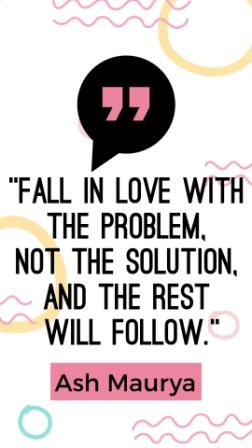
Want to Start Making Consistent Sales in Your Business?
Gain access to our FREE customer acquisition guide
Ash Maurya is an entrepreneur, author, and creator of the Lean Canvas, a tool used by startups worldwide to plan and test business models.
He is best known for his work in promoting the Lean Startup methodology, which helps entrepreneurs validate their ideas quickly and efficiently with minimal risk.
Ash has founded several companies and is the CEO of Leanstack, a company focused on helping startups build successful businesses through lean principles.
He is a highly regarded speaker, mentor, and coach in the startup community, known for making complex ideas simple and actionable.
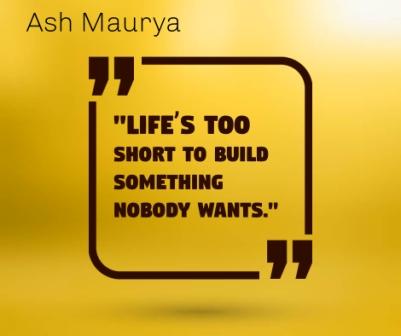
Test your Knowledge
Choose the correct answer from the options below

Time's up
Read the full book
You may also like
Discover how to make your business successful from day one! No guessing games. Just the right ingredients to…
Tired of getting nothing but polite nods and empty compliments when you share your business idea? The Mom…
Got a brilliant business idea but unsure if it’ll fly? Testing Business Ideas is your ultimate cheat sheet…
What if you could build a wildly successful business without wasting time or money? The Lean Startup flips…
Want to know how to design products your customers will really love to buy? See our summary of…

